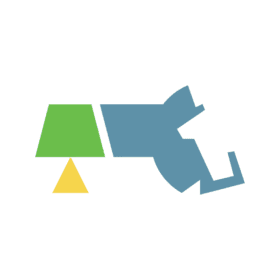December 29, 2020 Blog
Shoulder to Shoulder: The Power of One…
This work is humbling. You think you understand something, and then you don’t. It dawns on you how much more you must learn and how frequently you will stumble. And then you have a choice. You can beat yourself up and feel badly, over and over again, or you can welcome the sting of each mistake as a sure sign of growth and change. With each and every fall I am working very hard to choose the affirmative –because if I don’t, then those negative feelings build up and create resistance to taking any risk at all. That negativity gives me an easy way out. Turns out, taking time to pause, listen and reflect helps flip the script. And for me, being more transparent and candid about my own work and my failures fuels growth, too.
As of September, everyone at the Foundation (staff, Trustees and Distribution Committee members) had completed their Intercultural Development Inventory (an on-line assessment tool that places the responder on an intercultural competence continuum). This felt like a major accomplishment to me. Our diversity, equity and inclusion advisors from IPS Consultants then encouraged each of us to create our own personal development plan (or IDP), a tool to help advance our learning in an intentional and accountable way. If we each worked our plan, then those combined efforts would move the entire organization forward on the continuum. I love a plan. If the Foundation could move from “minimization” all the way to “adaptation” it would help us be more effective in bridging differences, serving our communities equitably, and having greater overall impact. Now that sounded promising!
So, we all created our IDPs and started the work, right? Well, not exactly. I set that task aside for nearly two months. You see, I was already reading, watching, and listening to every article, book, podcast or TED talk I could find on racial equity, diversity and inclusion. That, I told myself, was enough of a plan: just keep reading.
And even if I had put a comprehensive plan together, I was uncomfortable sharing it. Let’s face it, I am no expert. This is deeply personal work, and I did not feel equipped to assess or guide anyone else until I had done the work myself. (That perfectionist tendency creeps in all the time!) If I required each staff member to create a plan, how could I evaluate their plan or hold them accountable? I decided not to require it, and instead, I very softly invited staff to create their own IDPs.
A colleague came to me, willing to take a risk and be frank with me. She pressed me with questions about her (and my) plan. If I wasn’t requiring each person to create and work their plan, then was I demonstrating a true commitment to the work? Listening to her concerns pushed me to examine my approach more closely, and then I realized: this was a prime example of minimization (a phase on the intercultural competence continuum). Without intending to, I was avoiding a focused and direct conversation. Why? Because it was uncomfortable.
Pausing to reflect on my colleague’s questions and my own reaction, I recognized how unhelpful my thinking was– to me and the organization. I needed to be more intentional about building my own plan and more direct in setting expectations with my team.
So, after two months, I finally did dive in. I started with an overly ambitious, “change-the-world” kind of aspirational plan (rookie mistake). The inflated goals were unachievable and set me up for failure time and again. When I missed a target or milestone, I was hard on myself. Turns out, that kind of thinking isn’t helpful either. I ended up creating a weekly set of actions, including journaling time, specific readings/podcasts/videos (but not all of them, all at once), and reflection time. I’ve also scheduled a bi-weekly discussion with an accountability partner. These actions lead to goals I can review (and adjust) every three months.
Since one of my goals is to be more direct and transparent, I carved out time at a staff meeting to share my experience and clearly state my expectations. It wasn’t easy, but it was worth it. Someone said it helped open up a window they felt wasn’t there before to share and learn. Another person said they had been confused all fall and thanked me for being clear about what I expected. Keeping my thoughts, fears and goals to myself might not prevent my own growth – but sharing could amplify the learning tenfold.
As part of my reflections, I continue to think about philanthropy’s role in building equity. Part of the Foundation’s plan for the future involves our new Racial Equity Fund. As an organization, we envision a region where there is equity and opportunity for all. By focusing on closing the racial equity gaps, we can expand opportunities for many.
But designing this Fund can’t happen in a vacuum. Only by listening to those most affected can we see how philanthropy can be anti-racist and where it can build systems that increase equity in our communities. I invite you to think about what you would like to see from a Racial Equity Fund. What would you want the focus to be? How would you like to see it operate? What would you want the fund to do/support/change in your community?
Share your vision with me so that I can learn, and maybe we can take a few steps together, shoulder to shoulder.
Best,
Katie
